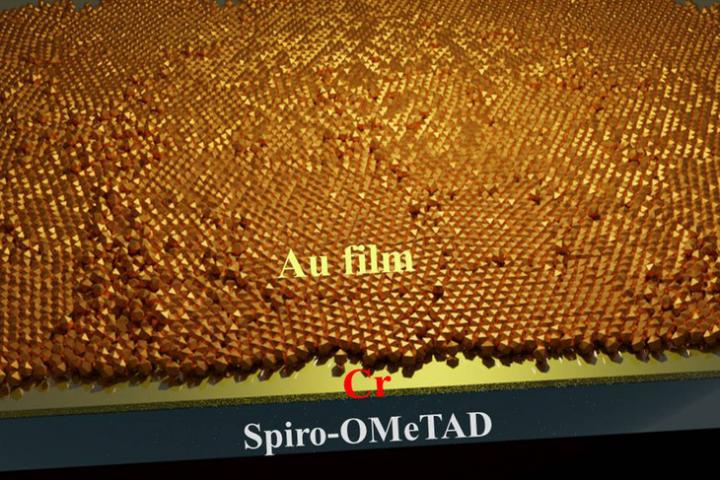Most types of solar cell require a top electrode layer that is both conductive and transparent – two properties not very often encountered together. Today, indium tin oxide (ITO) is the most commonly used material, but the relative scarcity of indium could soon become a problem.
With the growing need for transparent and semitransparent solar cells – either as part of a tandem device where light needs to reach multiple layers stacked on top of each other, or for other solar glass and other integrated cell concepts, scientists are hard at work seeking alternative transparent electrode materials.
A group led by Penn State University in the United States investigated a new method to grow a very thin, continuous layer of gold onto a perovskite solar cell as the top electrode layer. And while gold is also a rare and expensive material, the group is convinced its approach offers an alternate, efficient route to fabricating perovskite and tandem solar cells.
“We've shown we can make electrodes from a very thin, almost few atomic layers of gold,” said Shashank Priya, associate vice president for research and professor of materials science and engineering at Penn State. “The thin gold layer has high electrical conductivity and at the same time it doesn't interfere with the cell's ability to absorb sunlight.”
Chromium seed layer
Key to the electrode layer was the use of a chromium seed layer, which serves to spread the gold evenly into a continuous film, with high light transmittance and conductivity. “Normally, if you grow a thin layer of something like gold, the nanoparticles will couple together and gather like small islands,” explained Dong Yang, assistant research professor of materials science and engineering at Penn State. “Chromium has a large surface energy that provides a good place for the gold to grow on top of, and it actually allows the gold to form a continuous thin film.”
The group then incorporated this gold electrode into a perovskite solar cell, which it measured at 19.8% efficiency, and further incorporated the perovskite cell into a tandem device, stacked on top of a silicon heterojunction cell. This device reached an efficiency of 28.3%, improving on the HJT cell’s initial 23.3% efficiency. Both devices are described in the paper 28.3%-efficiency perovskite/silicon tandem solar cell by optimal transparent electrode for high efficient semitransparent top cell, published in Nano Energy.
The group further stated that the perovskite cells it fabricated are “stable and maintain high efficiencies over time in laboratory tests”, without offering details.
This content is protected by copyright and may not be reused. If you want to cooperate with us and would like to reuse some of our content, please contact: editors@pv-magazine.com.




By submitting this form you agree to pv magazine using your data for the purposes of publishing your comment.
Your personal data will only be disclosed or otherwise transmitted to third parties for the purposes of spam filtering or if this is necessary for technical maintenance of the website. Any other transfer to third parties will not take place unless this is justified on the basis of applicable data protection regulations or if pv magazine is legally obliged to do so.
You may revoke this consent at any time with effect for the future, in which case your personal data will be deleted immediately. Otherwise, your data will be deleted if pv magazine has processed your request or the purpose of data storage is fulfilled.
Further information on data privacy can be found in our Data Protection Policy.